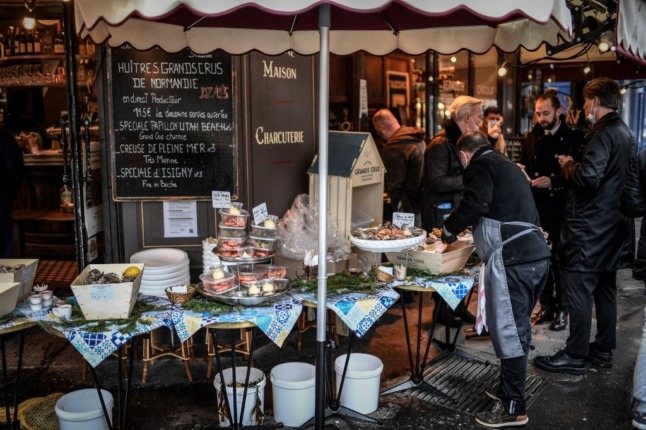5 things to know about a traditional French Christmas
Both December 24th and 25th are important days in France, although only the 25th is a public holiday (and if it falls on a Saturday or Sunday then bad luck, there’s no extra day off work).
The big Christmas seafood feast (more on that below) is traditionally held on the 24th while most families also exchange presents on this day. The 25th usually involves visiting relatives for lunch.
Presents are exchanged among friends and families, although the festival is slightly less of a consumerist nirvana than in anglophone countries. Within families present-giving often centres on children, with adults swapping smaller gifts.
Père Noël visits and leaves presents for the well-behaved children – and in certain parts of the country Père Fouettard (Father Flogger) visits naughty children with his whip, which may explain why French children tend to be quite well-behaved.
Watch out, too, for the Santons de Provence in Christmas markets. These are small hand-painted clay figurines that depict the people of Provence, in traditional costumes and carrying humble offerings, on their way to the Nativity. Sometimes, humorous or topical additions are made – in 2019, one santon-maker added a Yellow Vest protester. They are used to decorate festive cribs at home, or watch over gifts at the foot of the Christmas tree.
Food
Obviously all good festivals centre on food and France has its own traditions.
The big feast in France centres on seafood and families devour huge platters of shellfish including prawns, lobsters, crabs, whelks and – the Christmas king – oysters.
Traditionally this meal is eaten on the evening of December 24th or sometimes the early hours of the 25th, after everyone has returned from Midnight Mass.
On the 25th the lunch often involves a roast bird – duck and goose is popular, as is guinea fowl and turkey. This isn’t a strictly observed ritual though, and many families have their own food traditions for this day.
The usual Christmas desert is a Bûche du Noël (Christmas log) which is a chocolate or chestnut roulade with festive decorations. It’s often served with exotic fruits and you will see lots of pineapples and lychées in the shops at this time of year.
Religion
France is famously a secular republic and Christmas is – obviously – a Christian festival, so how to these two things square?
There are some nods to laïcité during the Christmas period – Christmas cribs are not allowed in public buildings such as town halls, and if your kids are in a French school you won’t be forced to go and watch them put on a nativity play – but in general it’s just celebrated as a festival that everyone enjoys.
Afterwards






Post a Comment